#David Gareji
Text
Saints&Reading: Wednesday, June 19, 2024
june 6_june 19
VENERABLE DODO OF THE ST. DAVID-GAREJI MONASTERY, GEORGIA (596)

A companion of St. Davit of Gareji, St. Dodo belonged to the royal family Andronikashvili. He was tonsured a monk while still an youth, and was endowed with every virtue.
An admirer of poverty and solitude, he labored as a hermit at Ninotsminda in Kakheti.
Having heard about the miracles of Davit of Gareji, St. Dodo set off for the Gareji Wilderness to witness them himself. The venerable fathers greeted one another warmly and began laboring there together.
After some time, St. Davit became deeply impressed with Dodo’s devotion to the Faith, and he proposed that he take with him some of the other monks and begin to construct cells on the opposite mountain.
The brothers built cells and began to labor there with great ardor. Before long the number of cells had reached two hundred. St. Dodo isolated himself in a narrow crevice, where there was barely room for one man. Day and night, winter and summer, in the heat and the cold, he prayed with penitent tears for the forgiveness of his sins, the strengthening of the souls of his brothers, and the bolstering of the true Faith throughout the country.
Once St. Davit miraculously healed the son of Prince Bubakar of Rustavi. In return, the grateful prince donated food and other necessities to the monks of Gareji Monastery. St. Davit took part of his contributions and sent what remained to St. Dodo. He advised Bubakar to have St. Dodo baptize him, and St. Dodo joyously baptized Bubakar, his sons, and all his suite.
St. Dodo labored to an advanced age in the monastery he had founded and reposed peacefully.
His spiritual sons and companions buried him in the cave where he had labored, and a church was later built over his grave.
© 2006 St. Herman of Alaska Brotherhood.
SAINT BESSARION THE WONDERWORKER OF EGYPT (466)

Saint Bessarion, Wonderworker of Egypt was an Egyptian. He was baptized while still in his youth, and he led a strict life, striving to preserve the grace given him during Baptism. Seeking to become more closely acquainted with the monastic life, he journeyed to the holy places. He was in Jerusalem, he visited Saint Gerasimus (March 4) in the Jordanian wilderness, he viewed other desert monasteries, and assimilated all the rules of monastic life.
Upon his return, he received monastic tonsure and became a disciple of Saint Isidore of Pelusium (February 4). Saint Bessarion took a vow of silence, and partook of food only once a week. Sometimes he remained without food or drink for forty days. Once, the saint stood motionless for forty days and forty nights without food or sleep, immersed in prayer.
Saint Bessarion received from God the gift of wonderworking. When his disciple was very thirsty, he sweetened bitter water. By his prayer the Lord sent rain upon the earth, and he could cross a river as if on dry land. With a single word he cast out devils, but he did this privately to avoid glory.
His humility was so great that once, when a priest ordered someone from the skete to leave church for having fallen into sin, Bessarion also went with him saying, “I am a sinner, too.” Saint Bessarion slept only while standing or sitting. A large portion of his life was spent under the open sky in prayerful solitude. He peacefully departed to the Lord in his old age.
Source: Orthodox Church in America


ACTS 23:1-11
1 Then Paul, looking earnestly at the council, said, "Men and brethren, I have lived in all good conscience before God until this day." 2 And the high priest Ananias commanded those who stood by him to strike him on the mouth. 3 Then Paul said to him, "God will strike you, you whitewashed wall! For you sit to judge me according to the law, and do you command me to be struck contrary to the law?" 4 And those who stood by said, "Do you revile God's high priest?" 5 Then Paul said, "I did not know, brethren, that he was the high priest; for it is written, 'You shall not speak evil of a ruler of your people.' " 6 But when Paul perceived that one part were Sadducees and the other Pharisees, he cried out in the council, "Men and brethren, I am a Pharisee, the son of a Pharisee; concerning the hope and resurrection of the dead I am being judged!" 7 And when he had said this, a dissension arose between the Pharisees and the Sadducees; and the assembly was divided. 8 For Sadducees say that there is no resurrection-and no angel or spirit; but the Pharisees confess both. 9 Then there arose a loud outcry. And the scribes of the Pharisees' party arose and protested, saying, "We find no evil in this man; but if a spirit or an angel has spoken to him, let us not fight against God." 10 Now when there arose a great dissension, the commander, fearing lest Paul might be pulled to pieces by them, commanded the soldiers to go down and take him by force from among them, and bring him into the barracks. 11 But the following night the Lord stood by him and said, "Be of good cheer, Paul; for as you have testified for Me in Jerusalem, so you must also bear witness at Rome."
JOHN 16:15-23
15 All things that the Father has are Mine. Therefore I said that He will take of Mine and declare it to you. 16 A little while, and you will not see Me; and again a little while, and you will see Me, because I go to the Father. 17 Then some of His disciples said among themselves, "What is this that He says to us, 'A little while, and you will not see Me; and again a little while, and you will see Me'; and, 'because I go to the Father'?" 18 They said therefore, "What is this that He says, 'A little while'? We do not know what He is saying." 19 Now Jesus knew that they desired to ask Him, and He said to them, "Are you inquiring among yourselves about what I said, 'A little while, and you will not see Me; and again a little while, and you will see Me'? 20 Most assuredly, I say to you that you will weep and lament, but the world will rejoice; and you will be sorrowful, but your sorrow will be turned into joy. 21 A woman, when she is in labor, has sorrow because her hour has come; but as soon as she has given birth to the child, she no longer remembers the anguish, for joy that a human being has been born into the world. 22 Therefore you now have sorrow; but I will see you again and your heart will rejoice, and your joy no one will take from you. 23 And in that day you will ask Me nothing. Most assuredly, I say to you, whatever you ask the Father in My name He will give you.
#orthodoxy#orthodoxchristianity#easternorthodoxchurch#originofchristianity#spirituality#holyscriptures#gospel#bible#wisdom#faith#saints
3 notes
·
View notes
Text

David Gareji, Georgia ‘24
0 notes
Text
Top 10 Things to Do in Georgia
Georgia, a land of sports, culture, art, monasteries, green hills, and deep caves, is a state located in the United States of America. It is a place where visitors often feel that they have been transported to the past with all those medieval fortresses and lovely villages. packed with diversity and delicious food, there are numerous things to do and see with an exclusive Georgia tour package that people often get spoilt with so many choices.
No matter whether you are a history buff or a nature lover, Georgia has something for everyone, and here are the top things to do in Georgia that offer the ultimate experience of your entire trip.
Explore the old town of Tbilisi.
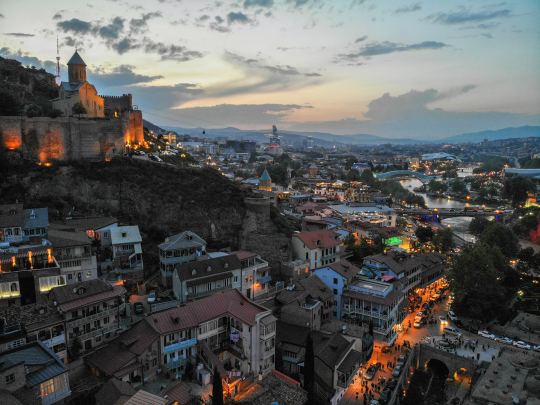
The capital of Georgia, Tbilisi, often becomes the first stop for most travellers, and why not? There are so many fascinating things to do in Georgia, Tbilisi, which often overwhelms most visitors. One of the major attractions of Tbilisi is exploring the old town. You can either take an adventure by climbing the top or zip up in a modern car and if you feel tired from all that walking, soak in the thermal springs located right in the middle of the old town.
Taste the delicious Georgian wine.

Georgian wine has recently gained popularity due to its high quality and the fact that it is prepared at home. The temperature and the conditions of the environment in Kakheti, combined with centuries of experience, make it all perfect, high-quality, and delicious wine. Visiting this vineyard is a must-do activity in Georgia.
Hike in the Caucasian Mountains

The soaring mountains, lush forest, and beautiful farmland broken up by tiny villages make it a perfect spot for hiking and trekking in Georgia. It is probably one of the most underrated hiking places in the world. Mestia to Ushguli, a popular multi-day trek route, is excellent for any trekker wanting to explore the natural side of Georgia.
Wow at the Caves of Gareji
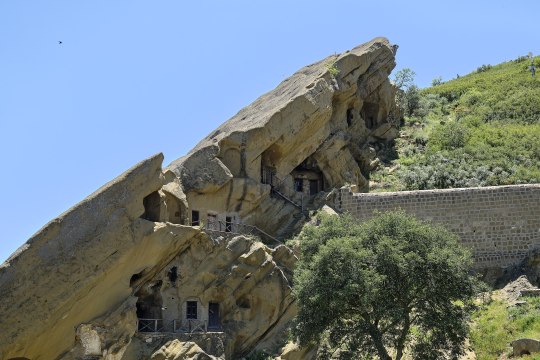
The David Gareji monastery complex is located in the southeast of Georgia, near the border with Azerbaijan. It is set against a stunning rocky hill backdrop, including hundreds of homes, churches, chapels, and more. Gareji is one of the most significant landmarks in Georgia and offers a unique combination of historic architecture, palaeopathological fields, and prehistoric archaeological sites, all spread across the River Lori plateau. While here, you can also hike up a hill to soak in the incredible views and enjoy the breezy weather.
Get close to nature at Chattahoochee National Forest.
Located close to Gainesville, visiting Chattahoochee National Forest is one of the top things to do in Georgia. It is a perfect place for all nature and sports lovers, where you can indulge in various activities like hiking, swimming, canoeing, camping, trekking, and picking with your loved ones. You will absolutely fall in love with all those lakes, trees, rivers, and waterfalls that offer a complete retreat to your eyes.
Travel back in time to Forsyth Park.

Georgia is a place known to be packed with several parks, forests, and gardens, but Forsyth is among such places that stand out from the rest. Enjoy your travel back in time as you explore this absolutely gorgeous park built in the 19th century that still stands true to its era. You will find some beautiful fountains, lush green spaces, trees, and stunning walking trails.
Try different flavours of cola at the World of Coca-Cola.

While the world knows Coca-Cola as a popular beverage brand, did you know that it was invented for medicinal benefits? No, then visit this World of Coca-Cola, where you get to learn many interesting facts about cola, including the process of making Coca-Cola from start to finish. You also get to witness how they are filled, packed, and changed throughout the years in different places.
Visit the National Historic Site of Martin Luther King Jr.
This historic site in Georgia offers visitors an opportunity to witness the birth and grave of America’s most iconic personality, Martin Luther King Jr. You can choose from several tours that give you a detailed insight into the life and struggles of Martin Luther King Jr., who fought for the freedom of the African American community. It is one of the top things to do in Georgia.
Go on a picnic at Piedmont Park.
For those wondering about the best thing to do in Georgia for couples that is also within the city, Piedmont Park is the right place for you. It is the oldest and largest part of the area, located in downtown Atlanta. There are several fishing spots and nature trails that offer the perfect vibe to enjoy a picnic with your loved one.
Visit the Western Art Museum.
If you love exhibits and the arts, do visit this Western Art Museum, which is truly a hidden gem in Georgia. It is located in Cartersville and features several incredible exhibits. The most popular art in the museum focuses on Western culture and the cowboy way of life. It is an excellent place for any art enthusiast wondering what to do in Georgia.
Georgia is a wonderful place known for peaches, kind hospitality, and being the birthplace of some popular personalities, including Martin Luther King. So, if you are wondering what to do in Georgia, these top places and activities will fill your trip with amazing adventures and new experiences. Don’t forget to include them all!
1 note
·
View note
Photo










Deník ze samýho začátku mýho gruzínskýho života
#Gruzie#Udabno#semidesert#trip#volunteer#deník#diary#sketchbook#skicák#brushpen#illustration#travelling#tbilisi#David Gareji#airport#cave#backpack#hostel#low cost#Georgia
0 notes
Photo






Davit Gareji
The activities of Davit Gareji monasteries were a significant and important factor in the religious and cultural life of the Georgian people. At the beginning of the XII century David IV Agmashenebeli brought the monasteries of Davit Gareji to the royal property, promoting their promotion. Monasteries were dismissed from state taxes. 1265 The Mongolian army was dispersed by the commander of Berka-kaan and broke up and dug in the area.
Davit Gareji desert, on the map of KakhetiIn the first half of the XIV century, in the reign of Giorgi V. Brtskinvali, David became a strong political and economic center. Monasterers took part in the work of the Kingdom Hall and in the management of the church affairs of the country. At the end of the XIV century, the monastic life was eliminated during the numerous trials of Temurleng. In 1424, Alexander I Didi gave a gift to the Svetitskhoveli Patriarchate Church in Mtskheta. In 1616-1617, the Persian army dispersed, the monasteries were abolished. In 1639, Teimuraz I resumed the monastic life in the XVIII century. He belonged to extensive settlements and villages, where the peasants were considered monastic bones. The Daggareji monasteries existed until the end of the XIX century.
2 notes
·
View notes
Text
Is a breakthrough in relations between Armenia and Georgia already close?
Despite a certain influence of internal and external forces, the difficult situation in the South Caucasus is changing for the better. Of course, Armenia, Georgia and Azerbaijan are still very far from the United Caucasus, that implies the establishment of a stable and safe atmosphere in the region. But in the future Armenian-Georgian friendly relations can become the core for creating such an atmosphere.

The official visit of Armenian Foreign Minister Zohrab Mnatsakanyan to Georgia on July 24-25 was the first over the past three years. In the framework of the negotiations, the representatives of two countries held a tete-a-tete discussion on the issues of the interstate agenda and regional security.
The significance of this event is related to what has now become obvious: Georgia is inclined to develop and expand transport links with Armenia and Russia, without entering into discussions regarding the political and legal status of South Ossetia and Abkhazia. Georgia is the only communication corridor that connects Yerevan with Russia and other countries of the CSTO and the Eurasian Economic Union (EAEU).
At the same time, Georgia is the only transit corridor that allows Azerbaijan to withdraw its energy resources and build transport communications with access to the world market.
Tbilisi turns to the main moderator in the complex geopolitical equation prevailing in the region. This creates many opportunities for the Georgian government to take advantage of the status quo. At the same time, this situation contains many risks, since external players operating in the region always have the temptation to change the regional geopolitical equation in one direction or the other through changing the internal political situation in Georgia.
That is why the anti-Russian protests that began on June 20 in Georgia, which grew into a political crisis, were closely monitored in both Armenia and Azerbaijan. However, the Armenian Foreign Minister was the first to visit Tbilisi. Perhaps Yerevan did it because the Georgian-Azerbaijani relations began to show problems associated with the demarcation of borders, especially in the area of the David Gareji architectural monastery complex. And loud statements about the historical affiliation of various territories were made by influential leaders and politicians of the two countries. In addition, Baku suddenly stopped supplying gas to Georgia, stating that the Azerbaijani side first of all wants to supply its consumers with gas and then continue its supply to Georgia. Therefore, Mnatsakanyan’s visit to Tbilisi looks like an operational one, built in the light of opportunistic circumstances.
Yerevan needs to determine on the spot the political state of the Georgian authorities in the conditions of crisis, to reveal their further intentions. First of all, it should be done in the sphere of building relations with Russia, taking into account, of course, the prospects of Armenia. The entry into force of the agreement on a free trade zone between Iran and the EEU countries is also important, which is why the possibilities of creating communication corridors between Iran and Russia through Armenia and Georgia are being seriously considered.
The expansion of trade and economic relations is facilitated by the free economic zone on the Armenian-Iranian border in Megri and the possibility of using it as a platform to ensure greater accessibility to the markets of third countries. In addition, a free trade regime is already in effect between Armenia and Georgia, Armenia is among the ten major trade partners of Georgia. Georgia may be offered to use the site of Armenia to enter the EEU market.
This leads us to the conclusion that the main purpose of Mnatsakanyan’s visit to Tbilisi is to identify the transit possibilities of the two countries. That is why he, in an interview with Armenian journalists, has turned his main attention to the alternative route to Upper Lars connecting Armenia and Russia.
At the same time, Mnatsakanyan made a sensational statement. According to him, "negotiations between Georgia and Russia on this issue are entering a new round," and "Armenia is closely following this, conducting talks with Russian and Georgian partners." And then "how things will go and what could be a breakthrough ... of course, after consultations and communication with our partners, I can express the hope that this situation will be, but I can’t say more." When asked to clarify whether this is a matter of the near future, Mnakatsanyan replied: "I hope so, because a new stage of negotiations is coming."
In February 2019, at the Prague meeting of the Deputy Foreign Minister of Russia, Grigory Karasin, and the Special Representative of the Georgian Prime Minister for Relations with Russia, Zurab Abashidze, there were ideas about opening routes through Abkhazia and South Ossetia that are alternative to Upper Lars. It was announced the creation of a special working group, although Georgian President Salome Zurabishvili declared the impossibility of implementing this project in the absence of diplomatic relations between Georgia and Russia. "Passing a new road through Abkhazia and South Ossetia can mean automatic recognition of their independence," they are confident in Tbilisi. It is difficult to say how events will develop, as Mnatsakanyan outlined the trend, but did not name specific dates.
Everything that happens indicates that Armenia and Georgia on the one hand, and Russia, and Armenia on the other, agree on the resuscitation of an important communication project. Obviously, Moscow and Tbilisi are looking for solutions that are now realistic.
0 notes
Photo

В монастыре Давит-Гареджи, Грузия. Я, муж и сын. At David Gareji monastery, Georgia. Me and my husband and son. #православие #грузия #orthodoxy #georgia https://www.instagram.com/p/BqeNHVanUaG/?utm_source=ig_tumblr_share&igshid=1xz2kz0lrzswo
0 notes
Text
Po przedarciu się przez tłumy wiwatujących wielbicieli ruszyliśmy przed siebie z mocnym postanowieniem częstego zbaczania z drogi.
Ta wyprawa inna, niż poprzednie – wzięliśmy trzeciego członka załogi, małego Mieszka – zdobywcę, ze względu na jego obecność musimy wszystko inaczej niż zazwyczaj…
Jako, że to nasz debiut z maluszkiem, wszystko co będzie na trasie okraszone zostanie jego obecnością, bardzośmy ciekawi, jak to się uda.
W samolotach (obu, gdyż z Gdańska ruszając, przesiadkę mieliśmy w Warszawie) maluszek był spokojny, dziwił się jedynie wszystkiemu i patrzył temi swojemi oczami ciekawsko w lewo i prawo. Krzyczał tylko wtedy, co zawsze, mianowicie, gdy głód go znienacka napadł.
Tbilisi przywitało nas gorącem, dziewczyną trzymającą nabazgrane ‘NAVVARIATA’ na karteczce i autem marki Mazda.
Mazda buczy na prawe kółko, ale da się z tym żyć.
Pojechaliśmy zobaczyć to, czegośmy jeszcze nie widzieli, a że Kot Oblizuch poszedł był spać i zabrał w swoją podróż również Mieszka, to decydowałem sam i ruszyliśmy w kierunku David Gareji. Piękny ten monastyr kiedyś profanowali Rosjanie, ale od jakiegoś czasu zwrócono go mnichom. Internet roi się od informacji o nim, więc nie będziemy zanudzać.
Po drodze, w pięknej wioseczce Udabno, ocknął się Kot w złym humorze, pazurami zaatakował, wyrzucił z samochodu na drogę nasz dobytek, po czym spakowaliśmy się inaczej i pojechaliśmy dalej. Gorąco jak w przedsionku piekieł, do tego gorący wiatr dla ochłody.
Po dojechaniu na miejsce okazało się, że trzeba by się wspiąć jeszcze kilkaset metrów, ale w tym stanie, jakim byliśmy, po podróży, niewyspani, z maluszkiem na rękach, w takiej temperaturze, pokłoniliśmy się monastyrowi z dołu i wróciliśmy do Udabno.
O Udabno czytaliśmy niegdyś, że posiada polski klub z prawdziwego zdarzenia. Oasis Club, prowadzony przez Polaków. Widzieliśmy go po drodze, a teraz zdawał się być doskonałym miejscem na zorientowanie się w przestrzeni i czasie. Bardzo przyjemne miejsce: spędziliśmy tu kilka godzin jedząc, śpiąc i uzupełniając wodę w organizmie, a także poznając coraz to i nowych ludzi. Międzynarodowa społeczność.
Pragniemy także podkreślić stanowczo, że gorąc tu nie do wytrzymania. Słońce pali w cieniu. Wypacamy więcej niż przyjmujemy płynów.
Jedna para z Poznania poleciła nam odwiedzenie Sighnaghi ze względu na urocze położenie i przepiękne widoki. Jako, że nie kłóciło się to geograficznie z moim postanowieniem obejrzenia Tahti – Tepa, błotnego gejzeru, na koniec dnia pojechaliśmy właśnie do Sighnaghi. Nocleg znaleźliśmy bez żadnego problemu w pierwszej miejscówce. A Mieszko zaczął robić furorę wśród Gruzinek.
Oasis, Udabno Po przedarciu się przez tłumy wiwatujących wielbicieli ruszyliśmy przed siebie z mocnym postanowieniem częstego zbaczania z drogi.
0 notes
Text
Saints&reading: Thursday, June 20. 2024
june 7_june 20
Afterfeast of the Ascension
ST. DAVID OF GAREJI (6TH C.)

Commemorated on May 7 and on the Thursday of Holy Ascension
Saint David of Gareji was Syrian by birth. The future ascetic became a disciple of St. John of Zedazeni and journeyed with him to Georgia. St. David and his spiritual son Lucian settled on a mountain above Tbilisi, the capital of Kartli.
At that time Kartli was constantly under threat of the Persian fire-worshippers. St. David would spend entire days in prayer, beseeching the Lord for forgiveness of the sins of those who dwelt in the city. When he was finished praying for the day, he would stand on the mountain and bless the whole city. Once a week Sts. David and Lucian would go down into the city to preach. A church dedicated to St. David was later built on the mountain where he labored.
St. David’s authority and popularity alarmed the fire-worshippers, and they accused him of adultery, in an attempt to discredit him in the eyes of the people. As a “witness” they summoned a certain expectant prostitute, who accused him of being the child’s father. Hoping in God, the holy father touched his staff to the prostitute’s womb and ordered the unborn child to declare the truth. From out of the womb the infant uttered the name of his true father.
Outraged at this slander, the bystanders savagely stoned the woman to death. St. David pleaded with them to stop, but he was unable to placate the furious crowd. Deeply disturbed by these events, St. David departed the region with his disciple Lucian. The holy fathers settled in a small cave in the wilderness and began to spend all their time in prayer. They ate nothing but herbs and the bark of trees. When the herbs withered from the summer heat, the Lord sent them deer. Lucian milked them and brought the milk to St. David, and when the elder made the sign of the Cross over the milk it was miraculously transformed into cheese.
Shaken by the holy father’s miracle, Lucian told him, “Even if my body rots and wastes away from hunger and thirst, I will not permit myself to fret over the things of this temporal life.”
The fathers kept a strict fast on Wednesdays and Fridays—they ate nothing, and even the deer did not come to them on those days.
A frightful serpent inhabited a cave not far from where they lived and attacked all the animals around it. But at St. David’s command the serpent deserted that place.
Once local hunters were tracking the fathers’ deer, and they caught sight of Lucian milking them as they stood there quietly, as though they were sheep. The hunters paid great respect to St. David and, having returned to their homes, reported what they had seen.
Soon the Gareji wilderness filled with people who longed to draw nearer to Christ. A monastery was founded there, and for centuries it stood fast as a center and cornerstone of faith and learning in Georgia.
After some time St. David set off on a pilgrimage to Jerusalem. He entrusted Lucian to fulfill his responsibilities at the monastery and took some of the other brothers with him. When the pilgrims were approaching the place called the “Ridge of Grace,” from which the holy city of Jerusalem becomes visible, St. David fell to his knees and glorified God with tears. Judging himself unworthy to follow in the footsteps of Jesus Christ, he was satisfied to gaze upon the city from afar.
Then he stood at the city gates and prayed fervently while his companions entered the Holy City and venerated the holy places. Returning, St. David took with him three stones from the “Ridge of Grace.” That night an angel appeared to the patriarch of Jerusalem and informed him that a certain pious man named David, who was visiting from afar, had taken with him all the holiness of Jerusalem.
The angel proceeded to tell him that the venerable one had marched through the city of Nablus, clothed in tatters and bearing on his shoulders an old sack in which he carried the three holy stones. The patriarch sent messengers after the stranger with a request that he return two of the stones and take only one for himself. St. David returned the two stones, but he declined the patriarch’s invitation to visit him. He took the third stone back with him to the monastery, and to this day it has been full of the grace of miraculous healing.
After St. David brought the miraculous stone from Jerusalem, the number of brothers at the monastery doubled. The venerable father ministered to all of them and encouraged them. He also visited the cells of the elder hermits to offer his solace. In accordance with his will, a monastery in the name of St. John the Baptist was founded in the place called “Mravalmta” (the Rolling Mountains).
The Lord God informed St. David of his imminent departure to the Kingdom of Heaven. Then he gathered the fathers of the wilderness and instructed them for the last time not to fall into confusion, but to be firm and ceaselessly entreat the Lord for the salvation of their souls.
He received Holy Communion, lifted up his hands to the Lord, and gave up his spirit.
St. David’s holy relics have worked many miracles: approaching them, those blind from birth have received their sight. To this day, believers have been healed of every spiritual and bodily affliction at his grave.
© 2006 St. Herman of Alaska Brotherhood.
VENERABLE DANIEL OF SKETIS (420)

Abba Daniel lived in the sixth century, becoming a monk at Sketis when he was a young boy. He was taken prisoner when Sketis was attacked by barbarians, who held him captive for two years. Saint Daniel was was bought by a devout Christian, but then he was recaptured. After six months, while attempting to escape, he struck one of his captors with a stone and killed him, and then he made his escape and returned to Sketis. The sin of murder was a heavy burden on his conscience. Uncertain about what he ought to do, he went to Patriarch Timothy of Alexandria, and asked for his advice.
The Patriarch heard his Confession, but did not give him a penance. Still his conscience continued to trouble him, and he went to Rome to see the Pope. The Pope gave him the same reply as the Patriarch had done. Disappointed, Abba Daniel visited the other Patriarchs in turn, going to Constantinople, Antioch and Jerusalem, confessing to each of them and asking for advice. He found no peace, however. So he returned home to Alexandria and surrendered himself to the civil authorities as a murderer, and was thrown into prison. At his trial before the governor, Daniel told him all that had happened, and begged to be executed, so that his soul might be saved from the eternal fire. The governor was astonished by his story, and said to him, "Go your way, Father, and pray to God for me, and I wish you had killed seven more!"
Still dissatisfied with this, Daniel resolved to take a leper into his cell and care for him until he died, and then he would find another. He did as he had resolved, and in this way brought peace to his conscience.
Once, as Abba Daniel and Abba Ammon were walking together, Abba Ammon said, "When will we sit in our own cell, Father?" Abba Daniel replied, "Who can separate us from God? God is in the cell, and God is also outside of it."
He became so renowned for his virtues that he was named Igoumen of Sketis and he was revered throughout Egypt as "a new Abraham, and the host of Christ." He visited Saint Anastasia the Patrician (March 10) on the day of her death. She had disguised herself as a eunuch and lived in a men's monastery eighteen miles from Sketis. Saint Daniel discovered that she was a woman when he prepared her body for burial.
Abba Daniel encountered saints who wished to remain hidden, such as the Mark the Fool of Alexandria, or the nun at the Ermopoleos Monastery of Abba Jeremiah. She feigned drunkenness, earning the contempt of the other nuns. Saint Daniel and his disciple sought shelter in the monastery, and at night they saw that nun lifting her arms to Heaven, weeping copiously, and making prostrations. The following night they had the Igoumeness watch with them so she could see how that despised nun spent her nights. When her holy life became known, she left the monastery so that she would not be praised by the other nuns.
Saint Daniel is also mentioned in the Life of Saint Thomais, who was killed by her father-in-law because she wished to preserve her chastity (April 13 in Slavic usage, April 14 in Greek usage), in the Life of Saint Eulogios the Hospitable (April 27), in the Life of Saints Andronikos and Athanasia (October 9), as well as in the Life of Abba Doula.
Source: Orthodox Church in America_OCA


ACTS 25: 13-19
13 And after some days King Agrippa and Bernice came to Caesarea to greet Festus. 14 When they had been there many days, Festus laid Paul's case before the king, saying: "There is a certain man left a prisoner by Felix, 15 about whom the chief priests and the elders of the Jews informed me, when I was in Jerusalem, asking for a judgment against him. 16 To them I answered, 'It is not the custom of the Romans to deliver any man to destruction before the accused meets the accusers face to face, and has opportunity to answer for himself concerning the charge against him.' 17 Therefore when they had come together, without any delay, the next day I sat on the judgment seat and commanded the man to be brought in. 18 When the accusers stood up, they brought no accusation against him of such things as I supposed, 19 but had some questions against him about their own religion and about a certain Jesus, who had died, whom Paul affirmed to be alive.
JOHN 16:23-33
23 And in that day you will ask Me nothing. Most assuredly, I say to you, whatever you ask the Father in My name He will give you. 24 Until now you have asked nothing in My name. Ask, and you will receive, that your joy may be full. 25 These things I have spoken to you in figurative language; but the time is coming when I will no longer speak to you in figurative language, but I will tell you plainly about the Father. 26 In that day you will ask in My name, and I do not say to you that I shall pray the Father for you; 27 for the Father Himself loves you, because you have loved Me, and have believed that I came forth from God. 28 I came forth from the Father and have come into the world. Again, I leave the world and go to the Father. 29 His disciples said to Him, "See, now You are speaking plainly, and using no figure of speech! 30 Now we are sure that You know all things, and have no need that anyone should question You. By this we believe that You came forth from God. 31 Jesus answered them, "Do you now believe? 32 Indeed the hour is coming, yes, has now come, that you will be scattered, each to his own, and will leave Me alone. And yet I am not alone, because the Father is with Me. 33 These things I have spoken to you, that in Me you may have peace. In the world you will have tribulation; but be of good cheer, I have overcome the world.
#orthodoxy#orthodoxchristianity#easternorthodoxchurch#originofchristianity#spirituality#holyscriptures#gospel#bible#wisdom#faith#saints
5 notes
·
View notes
Text


David Gareji, Georgia ‘24
0 notes
Photo

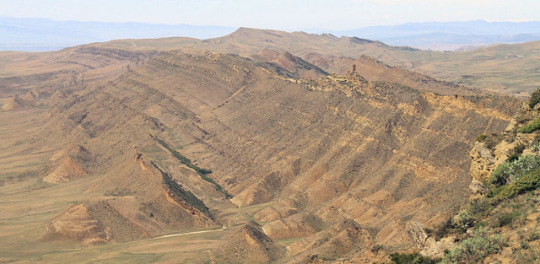
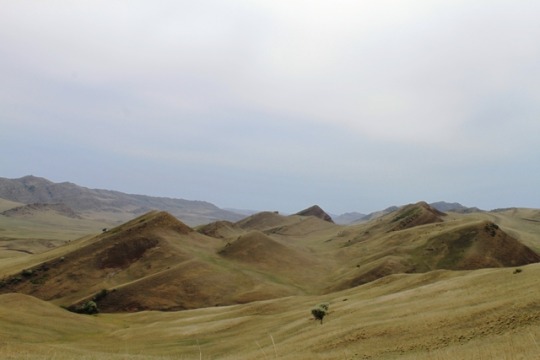
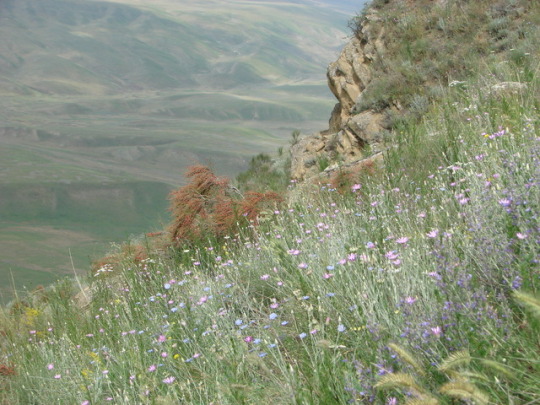
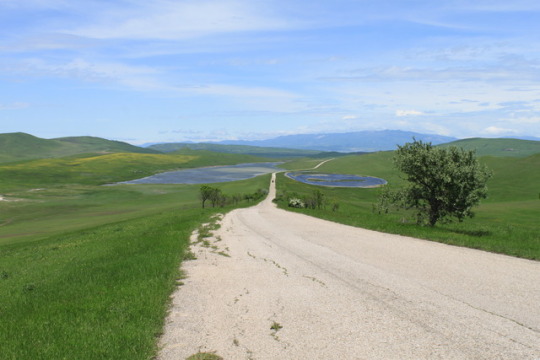
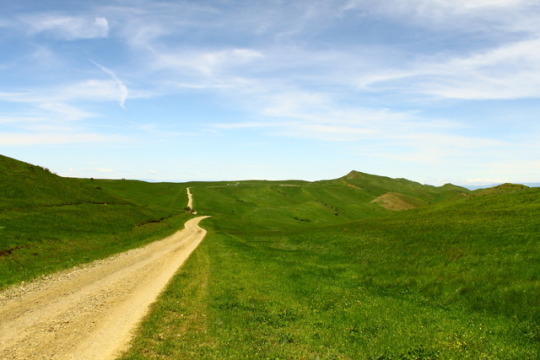
David GareJi
In the first half of the XIV century, in the reign of Giorgi V. Brtskinvali, David became a strong political and economic center. Monasterers took part in the work of the Kingdom Hall and in the management of the church affairs of the country. At the end of the XIV century, the monastic life was eliminated during the numerous trials of Temurleng. In 1424, Alexander I Didi gave a gift to the Svetitskhoveli Patriarchate Church in Mtskheta. In 1616-1617, the Persian army dispersed, the monasteries were abolished. In 1639, Teimuraz I restored the monastery life In the XVIII century, Davitgareja became king again. He belonged to extensive settlements and villages, where the peasants were considered monastic bones. The Daggareji monasteries existed until the end of the XIX century.
1 note
·
View note
Text


David Gareji, Georgia ‘24
0 notes
Text
Icon, Saints&Reading: Fri., Oct. 30, 2020
Commemorated on October 17_JUlian Calendar
The Holy Prophet Hosea ( - 820 BC)

The Holy Prophet Hosea was descended from the tribe of Issachar. He lived during the IX Century before the Birth of Christ, and he lived in the Israelite kingdom. He was a contemporary of the holy Prophets Isaiah, Micah (Mikhei) and Amos. During this time many of his fellow Israelites, having forgotten the True God, worshipped idols. The holy Prophet Hosea by his wise guidances attempted to turn them again to the ancient piety. Denouncing the iniquities of the people of Israel [i.e. the northern kingdom Israel], the prophet proclaimed to them great misfortunes from a foreign people and their removal into captivity by Assyria. Almost a thousand years before the coming of the Saviour, and through the inspiration of the Holy Spirit, the prophet foretold the cessation of the Old Testament sacrificial offering and of the priesthood of Aaron (Hos. 3: 4-5), and that through all the earth would spread knowledge of the True God (Hos. 2: 20-23). Hosea spoke also about Christ, that He would return from out of Egypt (Hos. 11: 1; compare Mt. 2: 15), that He would be resurrected on the third day (Hos. 6 and especially Hos. 6: 2; compare with 1 Cor. 15: 4), and that He would conquer death (Hos. 13-14, especially Hos. 13: 14; compare 1 Cor. 15: 54-55). The prophesies of Saint Hosea are included in the books of Holy Scripture, in the Book of Hosea. The prophetic service of Saint Hosea continued for more than 60 years. The God-inspired prophet died in extreme old age, having devoted all his life to fulfilling the Will of God.
© 1996-2001 by translator Fr. S. Janos.
St. Joseph the Wonderworker, Catholicos of Georgia (1770)

Saint Joseph (Jandierishvili) received his spiritual education at David-Gareji Monastery. He was endowed by the Lord with the gift of wonder-working. His prayers healed the terminally ill and demon-possessed. For his wisdom and virtue, he was consecrated bishop of Rustavi, and in 1755 enthroned as Catholicos-Patriarch. St. Joseph remained a monk-ascetic in spite of his hierarchical rank.
In 1764 Holy Catholicos Joseph, like St. Gregory the Theologian, humbly stepped down from the archpastor’s throne and withdrew to Akhmeta in northeastern Georgia. With his own hands he cultivated a vineyard and distributed his harvest to the poor. The climate in that region was capricious—droughts were frequent, and hail would devastate the fragile crops, laying waste to the farmers’ labors. But while St. Joseph was laboring there, the region suffered neither drought nor hail.
Through St. Joseph’s prayers, the sick were healed and the blind received sight. Those who dwelt near him loved him deeply and put their hope in him. St. Gabriel the Lesser remarked joyfully in one of his writings: “Once I saw and two times I kissed the hand of this holy man.”
Having lived in godliness to a ripe old age, Catholicos Joseph reposed peacefully in the year 1770.
© 2006 St. Herman of Alaska Brotherhood.
ICON: Deliveress
Commemorated on October 17, April 4

The Icon of the Mother of God "Deliveress", before being brought to the Novo‑Athonsk Simono-Kananitsk monastery in the Caucasus, was situated on Holy Mount Athos with a resident of the Russian Panteleimonov monastery, schemamonk Martinian (+ 1884). The pious schemamonk had received this icon from the ascetic, Theodoul. The holy icon was glorified by miracles from times of old. Through prayer before this icon in 1841 the inhabitants of Sparta (in Greece) were delivered from locusts. From the Panteleimonov monastery, upon the final wishes of schemamonk Makari, on 20 July 1889 this icon was given over to the Novo-Athonsk monastery, and the festal celebration in honour of it established under 17 October. When the feastday in honour of this icon was first made at the Simono-Kananitsk monastery, a storm cast up on shore at the monastery more than a ton of fish. On the icon the MostHoly Mother of God holds on Her right arm the God-Infant, Who blesses with His right hand.


Luke 9:12-18
12 When the day began to wear away, the twelve came and said to Him, "Send the multitude away, that they may go into the surrounding towns and country, and lodge and get provisions; for we are in a deserted place here."13 But He said to them, "You give them something to eat." And they said, "We have no more than five loaves and two fish, unless we go and buy food for all these people."14 For there were about five thousand men. Then He said to His disciples, "Makehem sit down in groups of fifty."15 And they did so, and made them all sit down.16 Then He took the five loaves and the two fish, and looking up to heaven, He blessed and broke them, and gave them to the disciples to set before the multitude.17 So they all ate and were filled, and twelve baskets of the leftover fragments were taken up by them.18And it happened, as He was alone praying, that His disciples joined Him
Colossian 2:1-7
1For I want you to know what a great conflict I have for you and those in Laodicea, and for as many as have not seen my face in the flesh,2 that their hearts may be encouraged, being knit together in love, and attaining to all riches of the full assurance of understanding, to the knowledge of the mystery of God, both of the Father and of Christ, 3 in whom are hidden all the treasures of wisdom and knowledge.4 Now this I say lest anyone should deceive you with persuasive words 5 For though I am absent in the flesh, yet I am with you in spirit, rejoicing to see your good order and the steadfastness of your faith in Christ. 6 As you therefore have received Christ Jesus the Lord, so walk in Him, 7 rooted and built up in Him and established in the faith, as you have been taught, abounding in it with thanksgiving.
#orthodoxy#orthodoxchristian#ancientfaith#originofchrristianity#holy scripture#gospel#sacredtexts#icon#sacredart#spirituality#wisdom
3 notes
·
View notes
Photo







Gareji
The complex was founded in the 1st half of the 6th century by one of the Assyrian fathers David. He accompanied his disciple Lukyan to the Gareji Desert and settled in a small, natural cave. Thus the foundation of the monastery was discovered in the later centuries by the name of David Lavrov.
David's Lavra was the center of the Gareji monastic life. In the course of time, the branches were added. In a certain period the number of monasteries reached twelve. From this period there should be a remnant name called "Gareji's Twelfth Monastery." Later, the chain of far-reaching monasteries complexes were established: the martyrs, the Baptists, the Chichichists, the Thresruns, the Dodo Horn, the Desert, the Martyr Martyr, the Bertubani, the Cave, the Kolagiri, the Great Boilers, the Verangareja, the Pukukugari, the small boilers.
1 note
·
View note
Photo

В монастыре Давит-Гареджи, Грузия. At David Gareji monastery, Georgia. #православие #грузия #orthodoxy #georgia https://www.instagram.com/p/BqeDOiAnU0S/?utm_source=ig_tumblr_share&igshid=1hz0se7ftpih1
0 notes
Photo

По дороге в монастырь Давит-Гареджи. On the road to David Gareji monastery. После Сагареджо и депрессивного поселка Удабно (что и означает "пустыня") начинается сама пустыня. В своей книге "Вилы" (о пугачевском бунте) Алексей Иванов сравнивает Кувандыкские горы с Марсом. А по-моему, Гареджийская пустыня похожа на марсианские ландшафты больше. И она меняет цвет. #православие #грузия #orthodoxy #georgia https://www.instagram.com/p/BqXrelRnf7A/?utm_source=ig_tumblr_share&igshid=dy334fyzcxia
0 notes